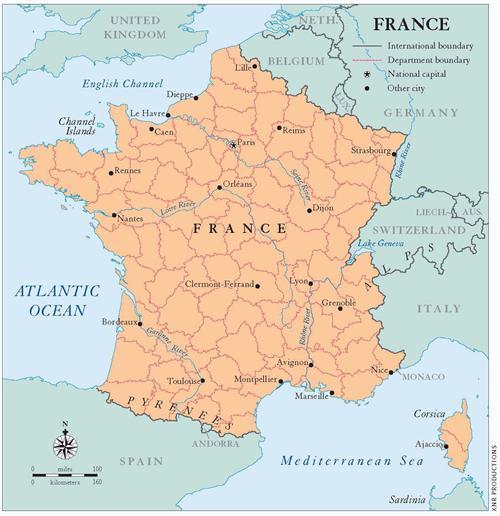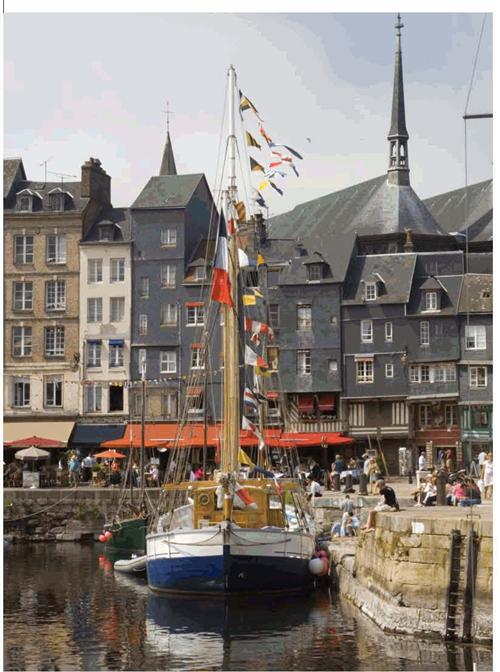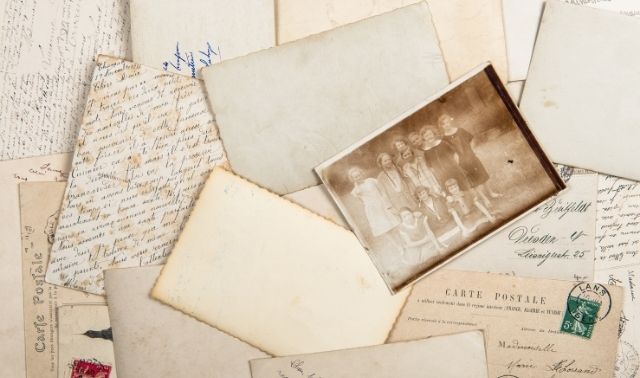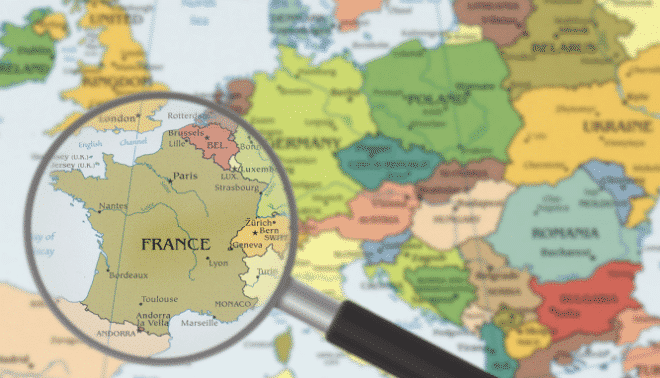Sign up for the Family Tree Newsletter! Plus, you’ll receive our 10 Essential Genealogy Research Forms PDF as a special thank you.
Get Your Free Genealogy Forms
"*" indicates required fields
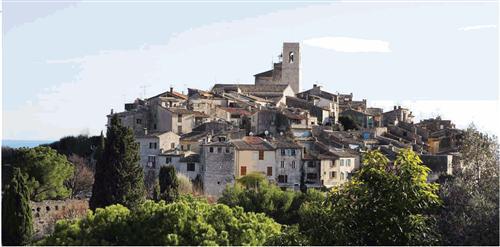
For Americans with French ancestry, that je ne sais quoi makes genealogy all the more alluring. Just imagine the history and culture your forebears witnessed. Lucky for you, the process of tracing your French roots isn’t literally indescribable: Follow the five research steps we’ve outlined, and say bonjour to your family tree.
1. Brush up on background.
How well do you know your French history? Part of Gaul (which covered most of western Europe) in ancient times, France has been home to a jumble of ethnic groups, including Celts, Germans, Romans and Greeks.
Julius Caesar brought Roman culture and the Latin language when he conquered Gaul in 59 BC. In the third and fourth centuries, a Germanic tribe called the Franks captured some of the region, and it later became part of Charlemagne’s Carolingian Empire. The country now called France was a monarchy from then until the French Revolution in 1789, after which a general named Napoleon Bonaparte became premier consul of the new French Republic. He crowned himself emperor of France in 1804 and reigned until 1815, when the monarchy was restored under Louis XVIII. A second republic and a second empire later, today’s France has a bicameral legislature, a president and prime minister.
During the 17th through 19th centuries, France was a religious battleground torn apart by warring elements of the predominantly Catholic population and its much smaller Protestant flock. Although laws called for tolerance, Protestant emigration siphoned off talented craftsmen such as weavers and silversmiths. One of the latter, Apollos Rivoire, Anglicized his name to Paul Revere; his namesake son became the famous American revolutionary.
Though such turbulent episodes spurred some immigration to America, the French didn’t come en masse like other ethnic groups — they arrived in trickles rather than floods. Samuel de Champlain formed North America’s first permanent French colony in 1608 at Quebec. If you paid attention in grade school, you may recall Jacque Marquette and Louis Joliet’s 1673 exploration up the Mississippi River and the 1682 expedition with Rene Robert Cavelier, sieur de La Salle at the helm. La Salle claimed the Mississippi basin for France and named it Louisiana.
La Nouvelle France was based in Canada, with a string of settlements (St. Louis, Natchez, New Orleans) along the Mississippi River. Protestants fleeing persecution in France were banned from New France; many went to the British Colonies. By the American Revolution, New France had an estimated population of 80,000, compared to 1.5 million in Britain’s 13 Colonies.
The French settled Quebec and Acadia (mostly Canada’s Maritime Provinces) early on, but in the 1750s and 1760s, the British expelled Acadians who wouldn’t pledge allegiance to the Crown. This ousting sent several thousand back to France and south to the British Colonies and Louisiana (then in Spanish hands). Following several French-English-Spanish hullabaloos, the United States bought Louisiana in 1803.
During the French Revolution from 1789 to 1799, thousands of political refugees left for the United States—enough that top destinations New York, Charleston and Philadelphia had French-language newspapers. Another immigration wave arose during the Franco-Prussian War of 1870-1871, when France lost its Alsace-Lorraine region. Many in this group settled in New York, New Orleans and Chicago.
The post-Civil War era saw an increase in French Canadian immigration to the United States, most frequently into the Northeastern states of Massachusetts, Vermont, Maine and Rhode Island. The 1930 census revealed that more than 135,000 US residents were French natives. The total French immigration from 1820 onward weighs in at about 750,000, a minimal number compared with immigration from elsewhere in Europe—but quite important if that figure counts your ancestor.
2. Take care of translations.
My own introduction to French genealogy came via a Huguenot (Protestant) ancestor who left France after Louis XIV revoked the Edict of Nantes (see the timeline, opposite), and settled for a time in the “Low Countries,” the approximate area of the Netherlands. Then he moved to England, whence he sailed to the New World, traveled down the East Coast and, apparently disliking one stop after another, wound his way back up to Pennsylvania.
I quickly discovered France has excellent records, particularly civil registrations and church records. Civil records are in French, but the format is easy to follow and you should be able to read them with a good French dictionary and knowledge of basic terms. Since my high school French is pretty hazy, I used a free online dictionary and translation tool. Church records also are in French.
Other records, such as military, notary and land documents, can be more difficult to interpret. This is a good time to find someone who can translate them for you. For recommendations, ask around at your genealogical society, a local college or your Church of Jesus Christ of Latter-Day Saints Family History Center (see our directory for locations’ contact information).
When requesting French records by mail, use the letter-writing guides at the Family History Library’s (FHL) FamilySearch website. Click the Search tab, then Research Helps, then F, and scroll down to the French section.
You may need to translate some dates, too. France used the French Republican Calendar from 1793 to 1805 (an 1871 attempt to reinstate it failed). It gave every month the same number of days and dubbed months and days of the week after poetic tree and plant names. Check out this online calendar converter to help you.
3. Find the place of birth.
Knowing your ancestor’s place of birth is critical, since most French records are kept at the department level — roughly equivalent to a US county clerk’s office. France has 100 departments (including some for former colonies), each administered by a prefect (prefet). Find departments and the towns (communes) in their jurisdictions at FranceGenWeb; note some departments, especially around Paris, have undergone boundary changes.
Not sure what French town your family came from? Begin researching at home. Look for your ancestor’s town name or immigration date in family Bibles, letters, naturalization papers and obituaries. If you’re not the keeper of the family goodies, contact your most knowledgeable relative. Even if you have no documentation, a village name might be part of a family story or legend.
Next, try to track down your ancestor (or members of allied families, who may be traveling companions) on a passenger list. The Immigrant Ships Transcribers Guild has French manifests from as early as 1820; most are for ships that departed from French ports such as Le Havre and Marseilles. Also check Ellis Island’s free database of 22 million names of passengers and crew who entered that port between 1892 and 1924.
The FHL in Salt Lake City has several microfilms, microfiches and books that could be of help in tracking place of origin, including:
• Les Combattants Français de la Guerre Américaine, 1778-1783 (microfilms 0547088 and 0962689) lists about 46,000 French soldiers who fought in the American Revolution.
• L’Emigration des Alsaciens et des Lorrains du XVIIIe au XXe Siècle by Norman Laybourn Strasbourg (Association des Publications près les Universités de Strasbourg, fiche numbers 6001613-4 and 6001614-6) is a microfiche of a French-language book naming immigrants from Alsace-Lorraine.
• The Acadians in France, 1762-1776 by Milton P. Rieder is a book of names, arranged by town, of Acadians — whom Britain had expelled from Canada — living in France from 1762 to 1776.
To find other records that might document your ancestor’s emigration, run a keyword search of the FHL catalog on terms such as france immigration. You can rent FHL films and fiche through your local FHC, but the library’s books don’t circulate. Instead, search WorldCat to locate them in closer-to-home libraries or those offering interlibrary loan.
4. Seek microfilmed records.
Once you know your family’s place of origin, you’re ready to delve into French records—but you can start right here at home, through FamilySearch. Start by exploring the site’s French genealogy guides, located in the Research Helps area with the letter-writing guides. Download the France Research Outline, which will lead you through the maze of records. You’ll also find outlines with search strategies for various records; for instance, click French Church Records Marriage 1564-1791 for instructions on how to find and read a marriage record and document your results.
Next, check the FHL catalog for microfilmed records by running a place search on your ancestor’s town or parish. Click a topic, such as church records, then select a title to see details on places and years covered. For example, a search of Verlans (in the department of Haute-Saone) returns a listing under Census and Civil Registration. The FHL has microfilms of the 1841, 1851 to 1856, 1866 to 1876, and 1886 to 1906 censuses. Microfilm also exists for civil registrations from 1793 to 1902.
Here’s what you should know about the French records you’ll start with:
• Civil registration: Government authorities have kept birth, marriage and death records (naissances, manages, dices) since 1792. Unfortunately, there’s no national index to them. Civil registers are at the city or village “town hall” (mairie), which is somewhat like a US city court. Privacy laws prevent most access to birth and marriage records for the past 100 years; however, genealogists can obtain a certificate with proof of direct descent. Death records aren’t confidential.
Once a record is 100 years old, it’s transferred to the archives départmentales, or departmental archives. If the FHL doesn’t have vital records for your ancestor’s town, request them by writing to the archives—link to addresses on this website.
Birth records often include the date and place of registration; date and place of birth; parents’ names and ages; as well as the name, age and occupation of the informant. Some birth records also give the parents’ birthplaces. The records sometimes bear margin notes that might indicate other records you should search. And fortunately, married women in France use their maiden names on records.
Marriage records include the bride’s and groom’s names, addresses and occupations; the marriage date and place; parents’ names; and occupations of at least two witnesses. The records also note previous marriages or children born prior to the marriage. The couple had to be married by civil authorities before marrying in the church, so note the civil and church ceremonies may have taken place in different locations.
Deaths were registered in the towns where they occurred. Information on death records varies with the era. Early papers might state only the name, date and place of death; later records can include the birthplace and parents’ names, as well as names, ages and occupations of witnesses.
Most baptismal records are from the mid-1600s on; a few date to the 1300s. Baptism records typically include the date of baptism; names of the child, parents and godparents; and the family’s residence. Church death records note the place and date of death, and names of the deceased and his parents or spouse. In church marriage records, you’ll find the date; place of origin; names of the bride, groom, parents and witnesses; and at times, the relationship of the witnesses to the couple. Records for brides and grooms who were close relatives may indicate permission or dispensation (dispense) was needed for consanguinité. You probably can track down the common ancestor because the record will reveal the degree of relationship.
The FHL has microfilmed many French parish records. Keep in mind the records aren’t indexed, so you’ll need to know the name of your ancestor’s parish, as well as the approximate date of the record, to order the right film. To identify parishes your family might’ve belonged to, the FHL recommends using the gazetteer Bottin des Communes (Éditions Bottin), available at libraries in print and through LexisNexis (a database offered by some libraries). If the FHL doesn’t have microfilmed records from your ancestors’ parish, try the departmental archives or write to the parish office.
5. Open it up to other records.
Now that you’ve gotten your feet wet, it’s time to look for the following records, which are a little more difficult to access and use (sacre bleu!). You’ll probably need to send a request letter to France, but check the FHL online catalog first.
• Military records, some dating from the 1600s, are at the Army and Navy Historical Services at the Château de Vincennes in Vincennes. Departmental archives hold local conscription records. The FHL has microfilmed few of these records. Military records are challenging unless you’re fluent in French. They’re not indexed, and they’re grouped by year, then alphabetically. You may want to consider hiring a French genealogy expert for help; search for a pro at the Association of Professional Genealogists website.
• Notary records (actes notariés) more than 125 years old are in departmental archives; some date to the 1300s. Notaries prepare documents such as marriage contracts and wills. These excellent sources are arranged chronologically, and often appear with other records for the same family.
• Land and property records are in the national archives, mairies or departmental archives. The FHL hasn’t microfilmed them. Property-transfer documents prepared by notaries are among notary records.
• Censuses began in 1772, but until 1836, they almost always show the number of people living in a household, not the names. Thereafter, censuses were taken every five years plus 1872 and 1916. These records—also not on FHL microfilm—are in departmental archives.

